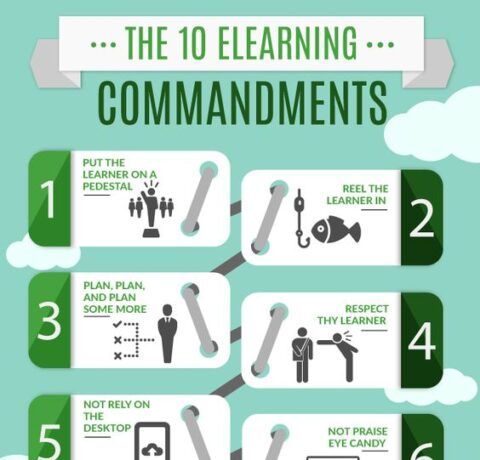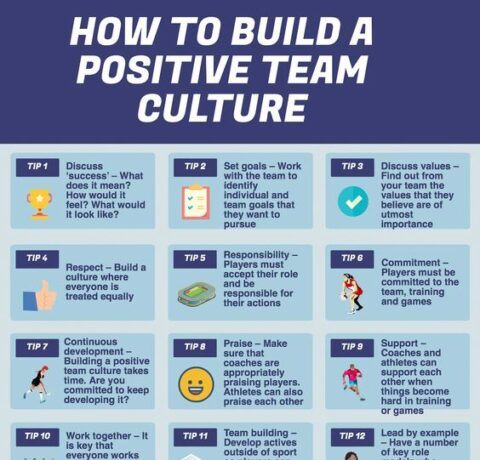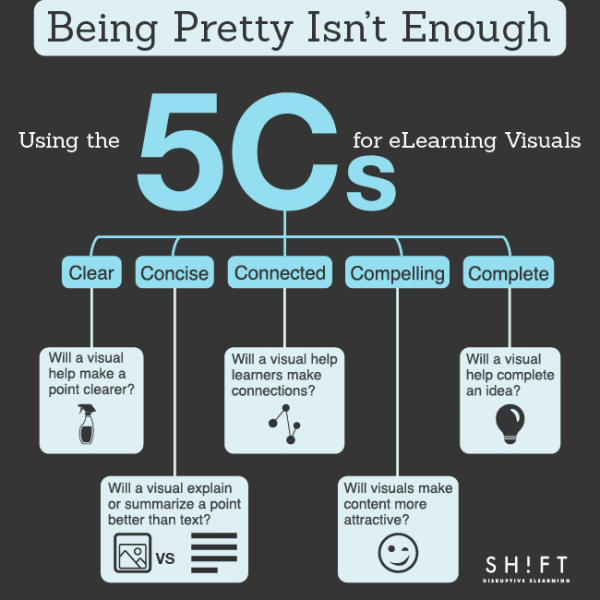Using the 5 Cs for eLearning Visuals Infographic
In order to become effective teaching tools, visuals must reflect the user’s cognitive architecture and add something meaningful to the learning experience. The Using the 5 Cs for eLearning Visuals Infographic presents a simple approach to creating effective visuals for eLearning by considering the 5 Cs. The approach is designed to help developers decide when they really need to include images and to avoid adding images just for the sake of it.
The 5 Cs for eLearning Visuals
1. Clear — Will a visual help make a point clearer?
As people remember visuals better than words, it can be useful to consider presenting certain points with graphs, illustrations, and photographs. Many times, this will make content easier to scan and understand and ensures learners stay interested.
2. Concise — Will a visual summarize a point better than text?
For content that requires extensive description or explanation, it may be better to express details visually. Not only does this reduce the amount of content on-screen, it also helps the brain function with its limited information-processing resources.
3. Connected — Will a visual help learners make connections?
Visuals for eLearning help users see logical connections, including similarity, difference, correlation, and cause and effect, that would otherwise require explanation. Constructed graphics organize complex materials to highlight key features and show spatial relations between important aspects that learners are unlikely to deduce on their own.
4. Compelling — Will visuals make content more attractive?
eLearning developers need to think carefully every time they consider using a visual for eLearning to decide if it will really make the message more persuasive, interesting, and likely to be read.
5. Complete — Will a visual help complete an idea?
Certain types of visuals for eLearning, such as tables, serve to complete the central idea by helping to narrow down material. In addition, they allow course designers to exclude details, by summarizing, concluding, or recommending, while staying out of the way of the main message.







You can adjust your cookie preferences here.